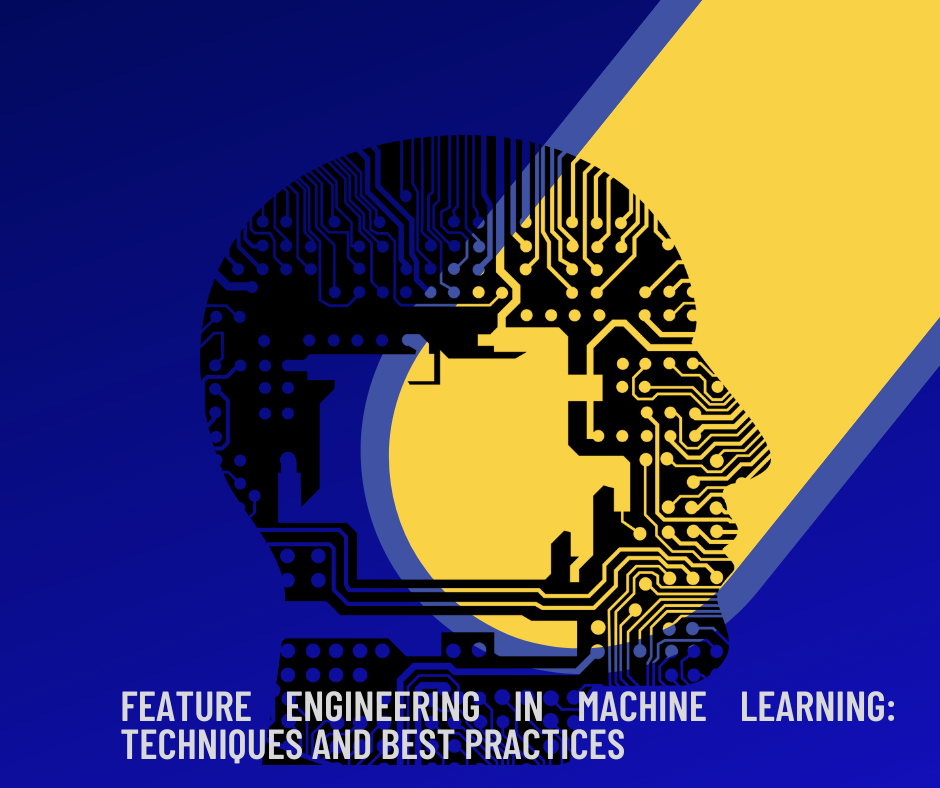Feature Engineering in Machine Learning: Techniques and Best Practices
 Ruhi Parveen
Ruhi Parveen
It involves creating new features or modifying existing ones to improve the performance of machine learning models. Well-engineered features can make the difference between an average model and a highly accurate one. This guide covers essential techniques and best practices in feature engineering to help you build robust and efficient machine learning models.
Understanding Feature Engineering
Feature engineering is the process of using domain knowledge to create features. It transforms raw data into meaningful representations that improve the predictive power of models. Features can be generated through various transformations, such as scaling, encoding, or deriving new features from existing ones.
Techniques in Feature Engineering
1. Handling Missing Data
Missing data is a common issue in datasets. Here are some techniques to handle it:
Imputation: For example, if a dataset has missing values in the age column, you can fill them with the median age.
Forward/Backward Fill: For time series data, missing values can be filled using the previous or next available value.
Dropping Missing Values: If the proportion of missing values is too high, dropping rows or columns might be the best solution.
2. Encoding Categorical Variables
Machine learning algorithms require numerical input. Therefore, categorical variables need to be converted into numerical format:
One-Hot Encoding: Creates binary columns for each category. If a column has three categories, three new binary columns are created.
Target Encoding: This technique is particularly useful for high cardinality categorical features.
3. Feature Scaling
Common scaling methods include:
Standardization: Subtracts the mean and divides by the standard deviation for each feature.
Normalization: Scales features to a range between 0 and 1, or -1 and 1.
Robust Scaling: Uses the median and the interquartile range, which is useful for data with outliers.
4. Polynomial Features
Polynomial features are created by combining existing features to capture nonlinear relationships. For example, if you have two features x1x_1x1 and x2x_2x2, polynomial features could be x12x_1^2x12, x1x2x_1 x_2x1x2, and x22x_2^2x22. This technique can significantly improve model performance in cases where the relationship between features and the target variable is nonlinear.
5. Interaction Features
They capture the effect of the interaction between features on the target variable. For example, if you have features "age" and "income," an interaction feature could be "age * income."
6. Binning
Binning involves converting continuous features into discrete bins or intervals. This technique is useful for capturing non-linear relationships and reducing the effect of outliers. For example, ages can be binned into categories such as "0-18," "19-35," "36-50," and "51+."
7. Log Transformation
Log transformation helps in reducing the skewness of the data, especially for features with exponential growth patterns. Applying the natural logarithm to such features can normalize their distribution.
8. Feature Selection
Feature selection involves choosing the most relevant features for the model. This can be done through:
Univariate Selection: Uses statistical tests to select features that have the strongest relationship with the target variable.
Recursive Feature Elimination (RFE): Recursively removes the least important features and builds the model with the remaining features.
Principal Component Analysis (PCA): Transforms the features into a lower-dimensional space while retaining most of the variance.
9. Time-Based Features
For time series data, additional features can be derived from the date and time information:
Date Components: Extracting year, month, day, hour, etc., from timestamps.
Lag Features: Using previous time steps as features.
Rolling Statistics: Calculating moving averages, rolling sums, etc., over a specified window.
10. Domain-Specific Features
Using domain knowledge to create features that are highly relevant to the problem at hand. For example, in a retail dataset, combining product categories into broader groups based on purchasing behavior can be a useful feature.
Best Practices in Feature Engineering
1. Understand the Data
Before engineering features, it is crucial to understand the data thoroughly. This includes:
Data Exploration: Visualize and summarize the data to identify patterns, correlations, and anomalies.
Domain Knowledge: Utilize domain expertise to identify potentially useful features.
2. Iterative Process
Feature engineering is an iterative process. Experiment with different features, evaluate their impact on model performance, and refine them accordingly.
3. Automate Feature Engineering
Automation can save time and ensure consistency. Tools like FeatureTools and automated machine learning (AutoML) platforms can help automate the feature engineering process.
4. Feature Importance
- Model-Based Methods: Use algorithms like Random Forests or Gradient Boosting Machines that provide feature importance scores.
5. Regularisation
Regularisation techniques like Lasso (L1) and Ridge (L2) regression can help in feature selection by penalising large coefficients and thus reducing the impact of less important features.
Conclusion
Feature engineering is a powerful tool in the data scientist's toolkit. It involves creativity, domain knowledge, and an understanding of the data to create features that enhance model performance. By mastering the techniques and best practices outlined in this guide, you can build more accurate and reliable machine learning models. Remember, the key to successful feature engineering lies in experimentation and iterative refinement. For those looking to delve deeper into data science, consider exploring the Best Data Science Training in Delhi, Noida, Mumbai, Indore, and other parts of India. Uncodemy offers comprehensive courses that can further enhance your skills in this field.
Subscribe to my newsletter
Read articles from Ruhi Parveen directly inside your inbox. Subscribe to the newsletter, and don't miss out.
Written by

Ruhi Parveen
Ruhi Parveen
I am a Digital Marketer and Content Marketing Specialist, I enjoy technical and non-technical writing. I enjoy learning something new.